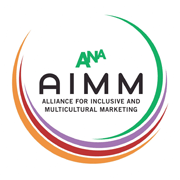Overwhelming Consumer Support for Inclusive & Diversity Initiatives
November 20, 2024

More than 8 in 10 consumers are comfortable or neutral on inclusive marketing practices, according to a new study. In fact, more than half of consumers (56%) would support or strongly support a brand that creates ads representing all groups. In comparison, only 10% (all others were neutral) would not support a brand that creates inclusive advertising, according to a new report where more than 12,000 consumers were surveyed.
Conducted by the Cultural Inclusion Accelerator (CIA) and released in partnership with the Association of National Advertisers’ (ANA) Alliance for Inclusive and Multicultural Marketing (AIMM), the “Consumer Sentiment on Inclusive Marketing & Diversity Efforts” report dissects consumers’ current perceptions around inclusive marketing and diversity practices. AIMM unveiled the findings today during a panel at ANA’s Multicultural Marketing & Diversity Conference.
According to the study, for every consumer who opposes brands that genuinely represent all consumer groups in ads, there are nearly 5.2 consumers who would support the brand, an increase from 4.6 consumers in 2023.
“The message from consumers is clear,” said Lisette Arsuaga, Co-Founder of AIMM, CIA, and DMI-Consulting. “Brands that visibly commit to inclusive marketing and diversity, especially in the face of public scrutiny, not only gain consumer loyalty but build brand resilience. Our research confirms that stepping back from inclusive initiatives poses a significant brand risk, while those who embrace these principles solidify their place in consumers’ lives – leading to business growth.”
The “Consumer Sentiment on Inclusive Marketing & Diversity Efforts” report emphasizes the growing consumer expectation for brands to authentically represent diverse groups in marketing efforts and maintain workplace diversity. Key insights of the report also include:
- Consumers Endorse Inclusivity in Ads, Events, Tailored Products, and Customer Experience: Besides supporting brands that create ads representing all groups, a supermajority of consumers, 89% to 90%, support or are neutral on brands that sponsor events, offer targeted products, and tailored customer experiences for multicultural and diverse groups.
- Consumers Link Diversity Initiatives to Organizational Effectiveness: An overwhelming majority, 84% of consumers, believe or are neutral on diversity initiatives being important to the success of most businesses.
Steadfast Diversity Commitment Builds Brand Trust: In the face of public criticism, consumers prefer brands that maintain workforce diversity. The report found that 86% of consumers are more likely to support or are neutral if a brand they’ve used remains committed to workforce diversity despite public criticism. - Equality Towards Workforce and Consumers is a Loyalty Driver: 89 to 93 percent of consumers overwhelmingly support or remain neutral on brands that treat all employees and consumers equally regardless of race or ethnicity, abilities, sexual orientation, gender, and age. For every consumer who opposes brands treating employees and customers equally, regardless of gender, race/ethnicity, abilities, sexual orientation, and age, there are nearly 7.8 consumers who would support the brand, which improved sharply from 5.9 consumers in 2023.
“The market has moved decisively from accepting inclusion to expecting it, from viewing diversity as an initiative to embracing it as standard practice,” said Carlos Santiago, Co-Founder of AIMM, CIA, and Santiago Solutions Group. “For today’s businesses, inclusive advertising, equitable treatment of workforce and consumers, and diverse talent practices aren’t optional strategies – they’re essential for sustainable growth.”
The CIA study engaged a fully representative and projectable random digital panel survey with a total sample of 12,412 consumers surveyed between October 24 and November 4, 2024. The survey was split into four sections of 3,311, 2,409, 2,398, and 4,294 respondents to reduce respondent bias and reduce the overall interview length. Results were aligned with the U.S. Census breakout of region and generation. For each segment, results were also weighted by income and education to ensure precise representation and projectability.




























